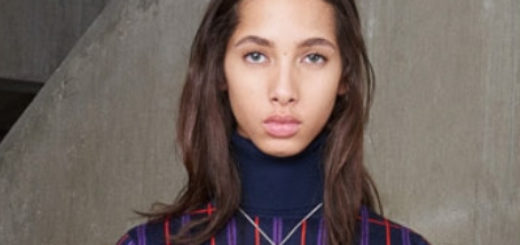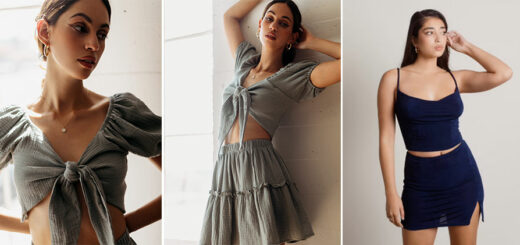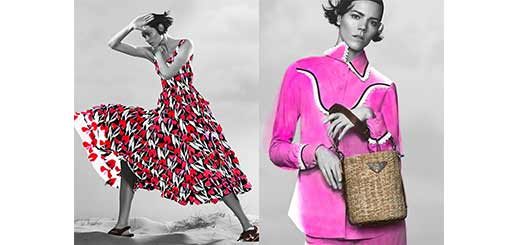Rakuten Tokyo (Part 1)
TOKYO RAKUTEN FASHION WEEK Autumn/Winter 2021/22 is a deliriously enticing hotchpotch of the Sculptural & Harmonious, the Traditional & Elegant … and the totally Wild, Woolly & Whacky.
Here’s a sneak peek of the best of the first few days of Rakuten.
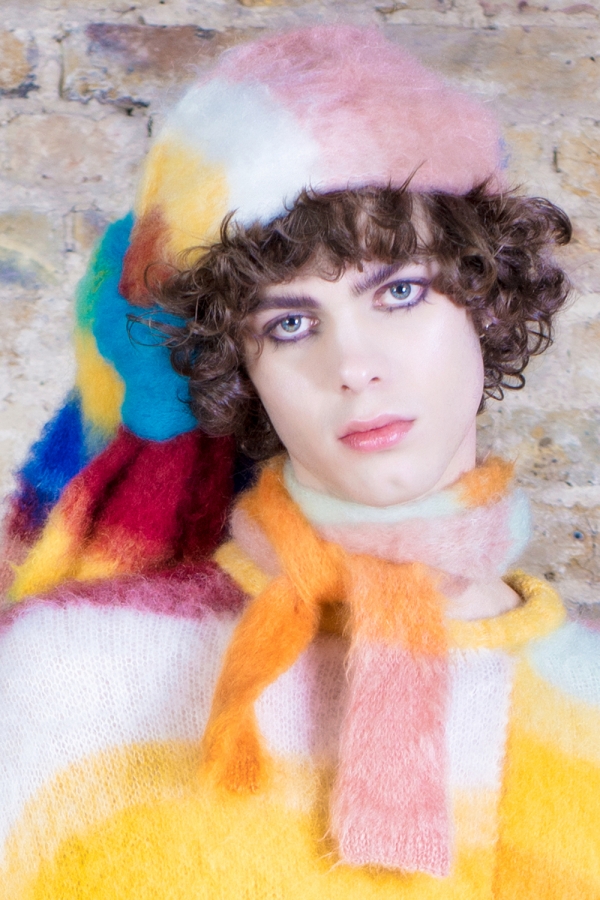
Image Credit Ka Wa Key | Psychedelic knitwear
The exciting thing about Tokio’s Rakuten is that it showcases a cross-section of some of the best that this uber design-conscious part of the world has on offer (and boy, has Japan blessed the world of fashion with superstar designers – one can’t help but think of the holy trinity of creative heavyweights that are Rei Kawakubo, Yohji Yamamoto and Issey Miyake).
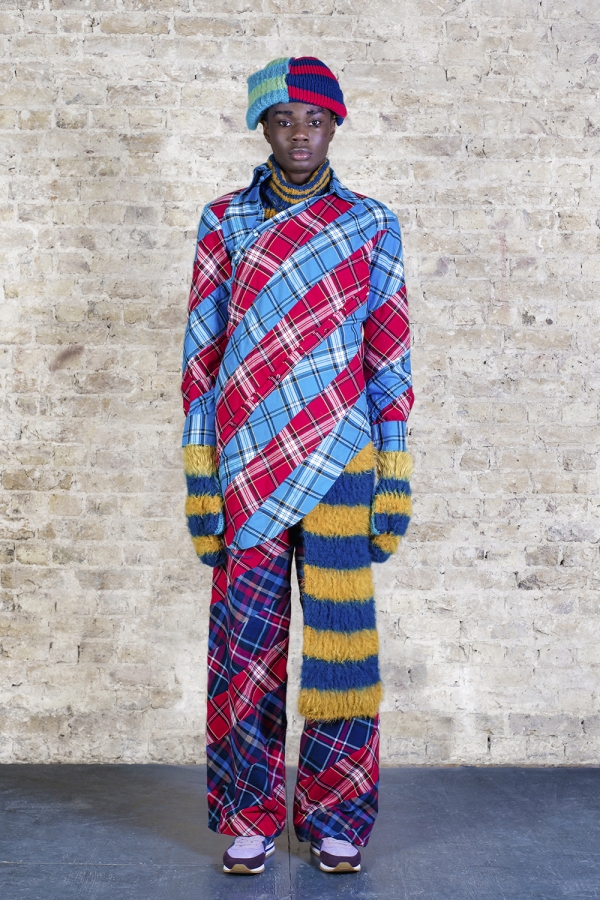
Image Credit Ka Wa Key | Diagonal stripes, tartan and a stripy scarf
The beauty of Rakuten is that it seamlessly allows seasoned designers to rub shoulders with those who have recently graduated and everyone in between. As ever there’s a pleasing balance between the avant-garde & sculptural (think Junya Watanabe), the ‘traditional’ (‘Japanese’ shapes that one could loosely describe as enveloping and ‘modest’) and lastly designs that really push the boundaries of convention (exciting stuff!). And everything in between.

Image Credit Ka Wa Key | Patchwork colours, geometric shapes and a pair of fuzzy knitted gloves
Perhaps the most fun place to start when rounding up the first few days of Rakuten would be the domain of street fashion, synonymous with the districts around the Akihabara station in Tokio and easily comparable in ‘hipness’ with what London’s Carnaby Street must’ve been like in the Sixties or the Kings Road in the Seventies. This is precisely what young designers in Japan do best! One standout brand is Ka Wa Key whose designers Ka Wa Key Chow and Jarno Leppanen hold Masters in Fashion and Art respectively. Designing a gender-fluid line of clothing with a sustainable ethos, Ka Wa Key’s dramatic asymmetrical shapes, diagonal lines and great mastery of colour are regularly featured at Fashion Weeks from Paris to New York.
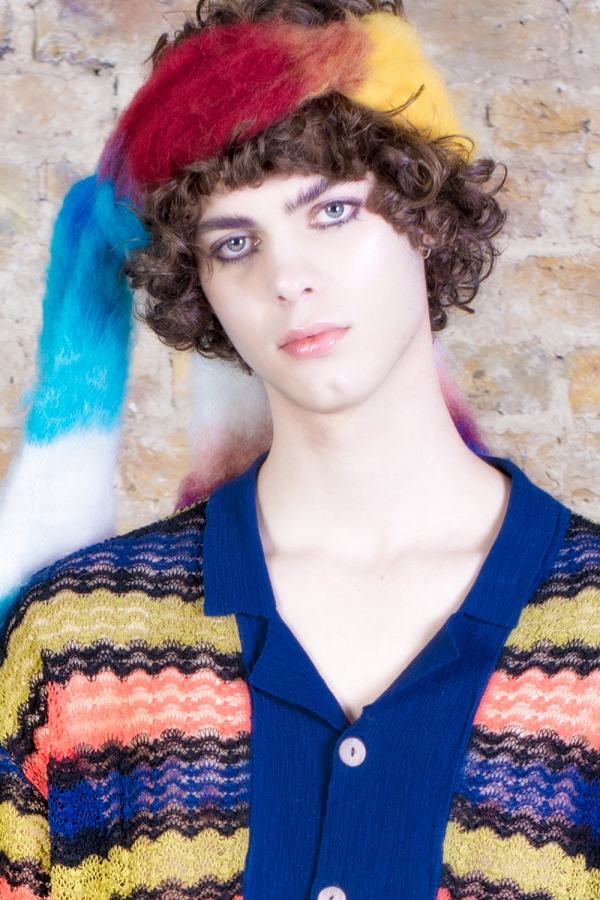
Image Credit Ka Wa Key | Mohair knits in psychedelic shades
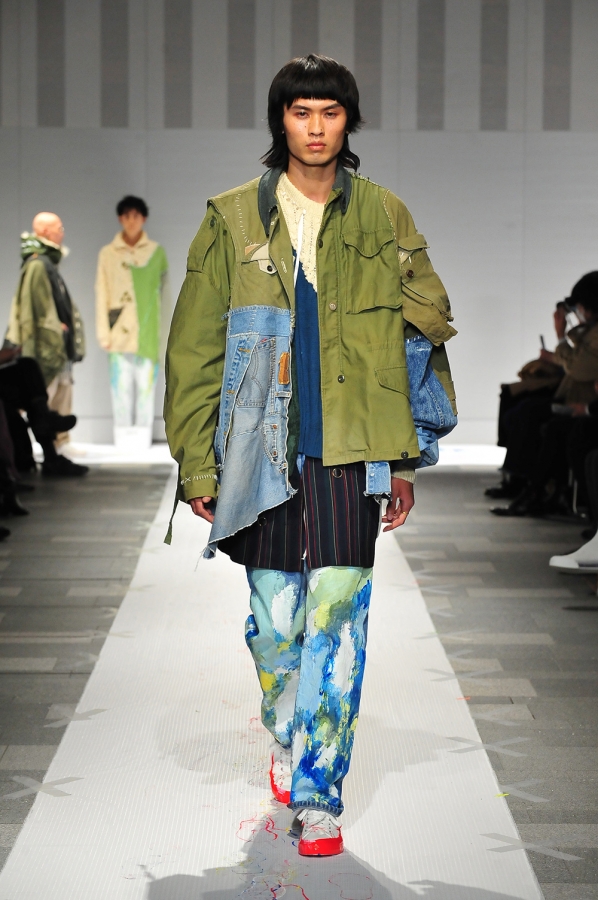
Image Credit Nisai | Deconstructed jackets and tie-dyed trousers
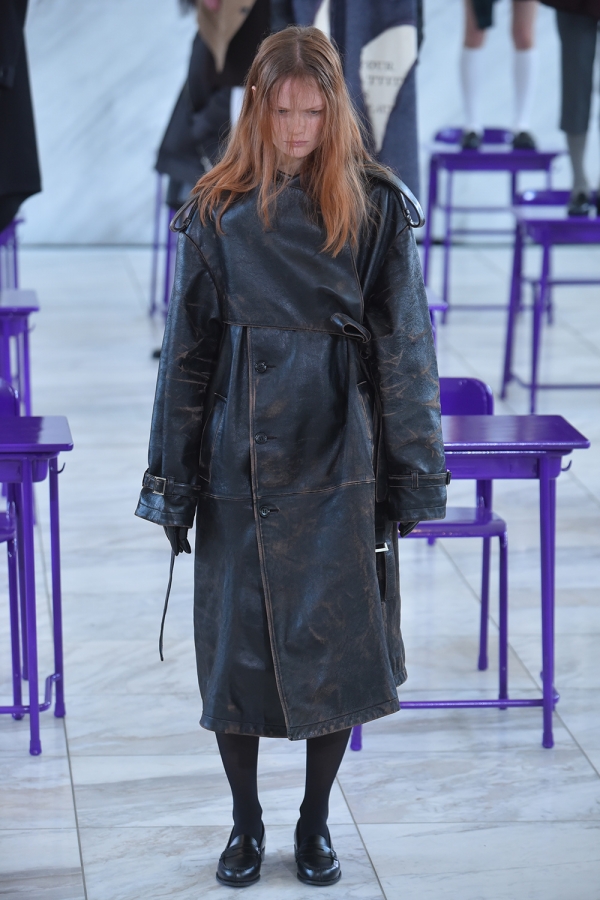
Image Credit Keisuki Yoshida | A distressed and deconstructed leather coat
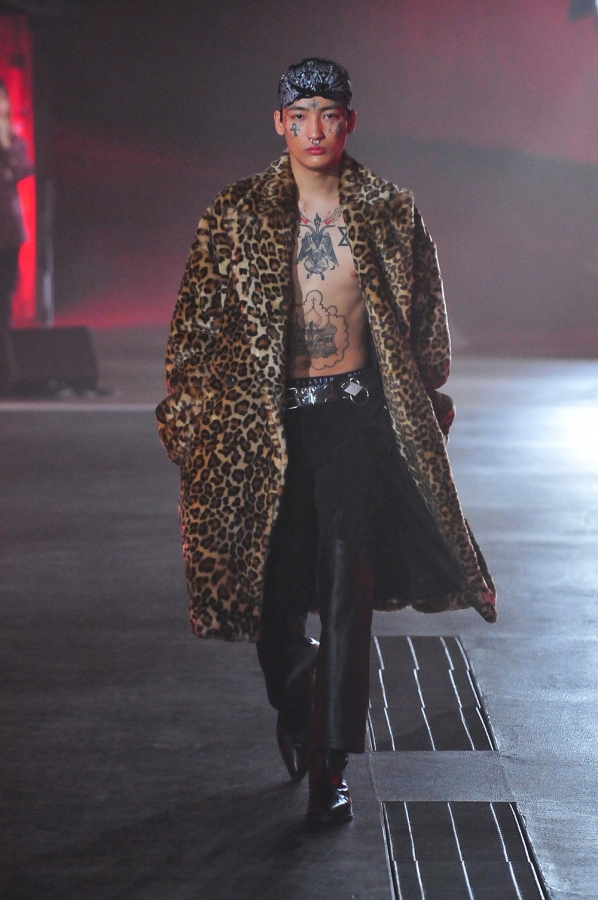
Image Credit el ConductorH | A leopard print coat and cowboy boots
Another streetwear label worth mentioning is Nisai, whose colourful deconstructed jackets and tie-dyed trousers remind one of another colourist legend in Japanese fashion, Kenzo Katada. Keisuki Yoshida’s distressed surface pieces with punkish tartan elements and surface printing could also have stepped straight from Akihabara! Designers Hokuto Katsui and Nao Yagi of Mint Designs, yet another couple of graduates from the stables of Central St Martin’s, have created a collection of avant-garde shapes with checks and outrageous platforms to juxtapose their almost clown-like tunics and collars. An interesting collection, too, which included a gorgeous leopard print coat, hot pants and fishnets came from Tokio’s Shintaro Nagamine’s el ConductorH.
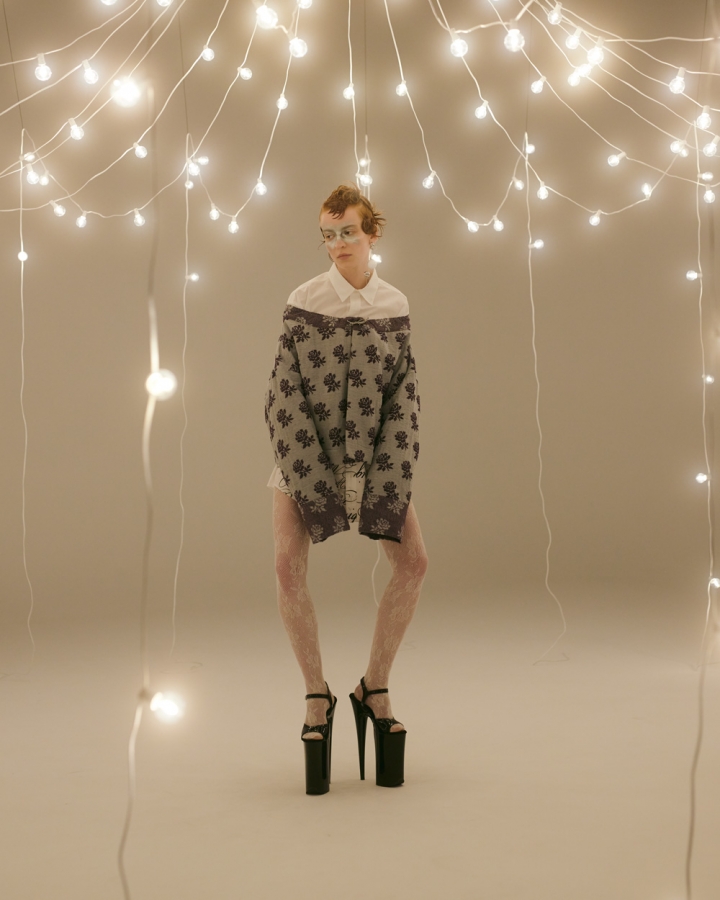
Image Credit Mint Design | Platforms and a classic white shirt
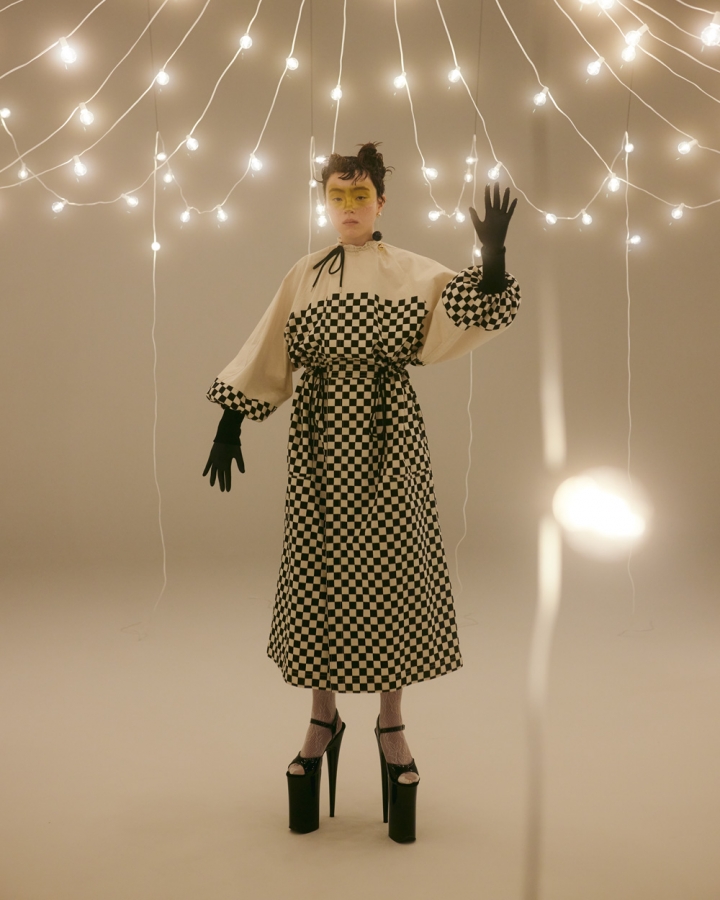
Image Credit Mint Designs | A marionette-like attire in graphic checks
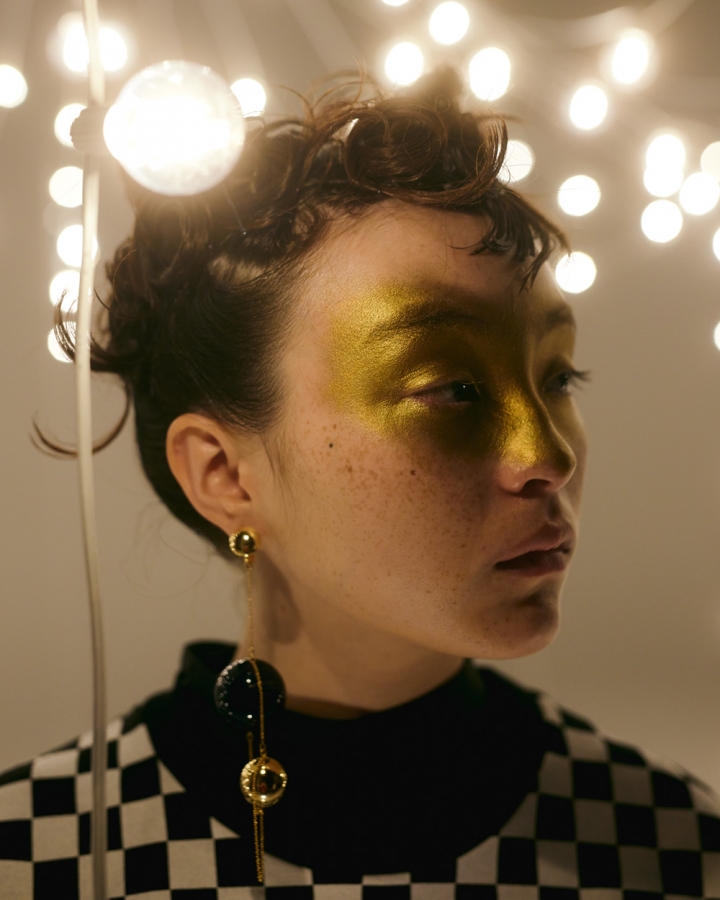
Image Credit Mint Designs | Gold make-up completes the look
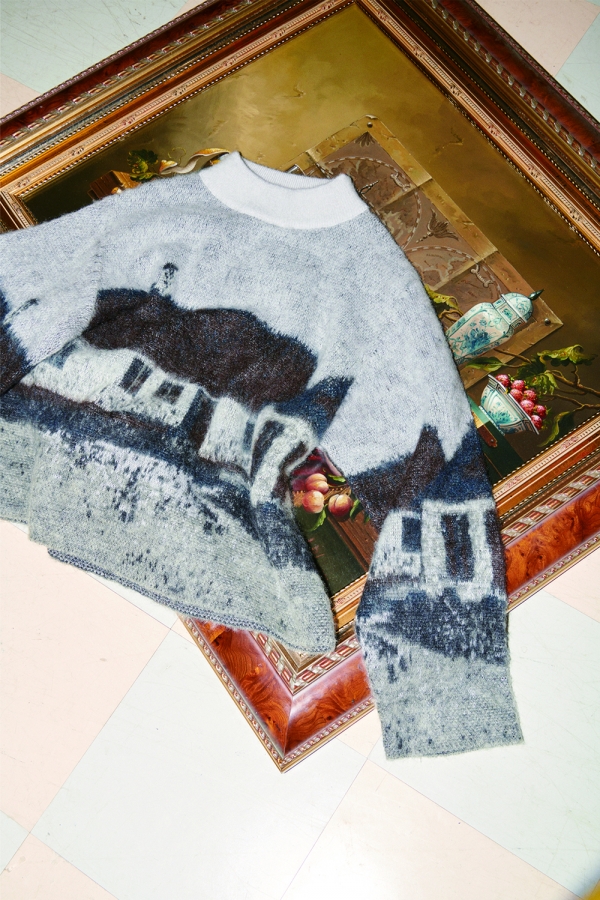
Image Credit Shinya Kozuka | Knitwear came in many guises
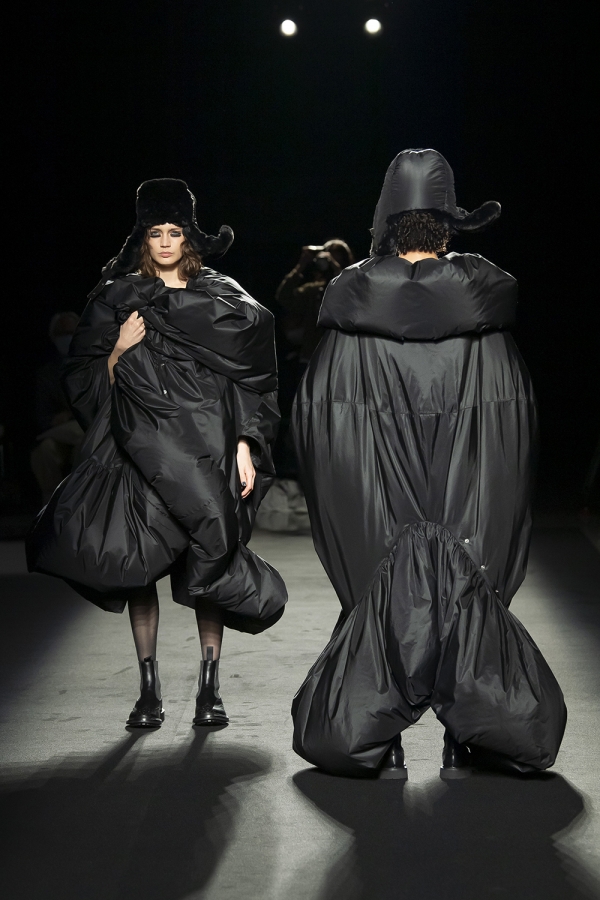
Image Credit Beautiful People | Enveloping shapes and novel fabrics in this puffer style outfits
Designer Hidenori Kumakiri of Beautiful People’ veered into Deconstructivist territory with
pieces like the ones above. Kumakiri did a stint as pattern maker at Comme des Garcons, which may explain the theatrical shapes and almost Charlie Chaplin-esque silhouettes of a collection that offered its fair share of capes and cloaks, corduroy, fake fur, tweed and even some chiffon. Another striking collection came from the stables of Kaiki Lio (brand Kaiki) who produced some almost egg-like shapes in a classic collection that offered a balance of neat silhouettes and layering. Shinya Kozuka, yet anotherCentral St Martins graduate produced someunderstated and voluminous shapes that shout functionality and ease.
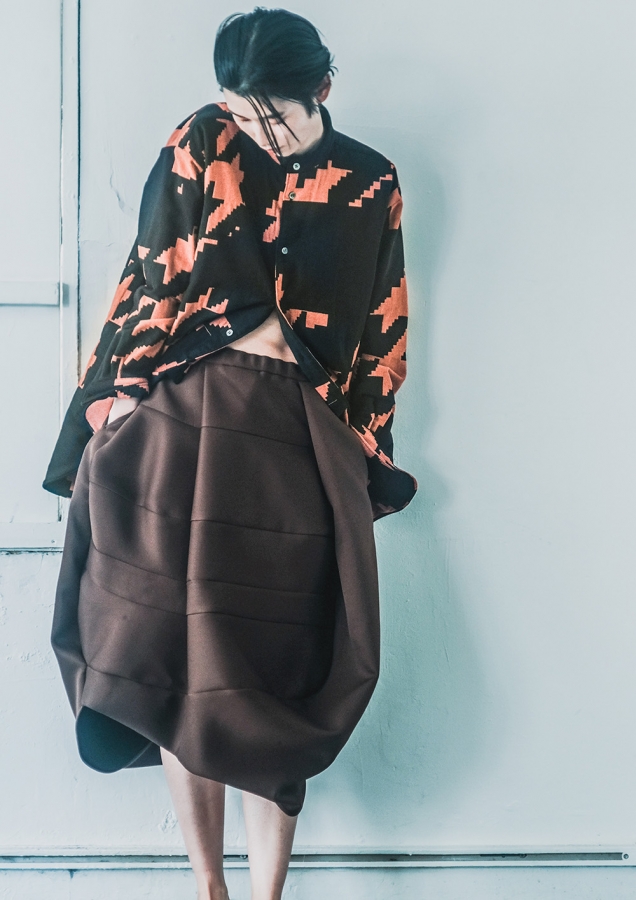
Image Credit Kaiki | A sculptural tulip skirt
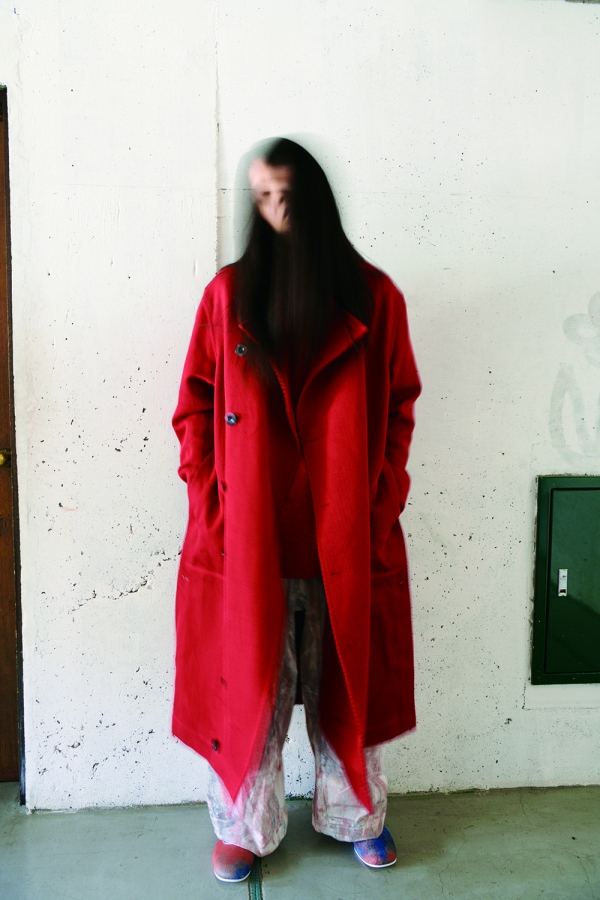
Image Credit Shinya Kozuka | A voluminous, oversized red coat
There were oodles of elegance too! Pieces showcased ranged from traditional shapes to avant-garde, all beautifully constructed and utterly wearable. One of the most talented designers and someone who is immensely respected in Japan today is Hiroko Koshino, who, in 1978, was the first Japanese designer to participate in Italy’s sought-after Alta Moda in Rome and has scooped up numerous awards since. Her brilliant craftsmanship and quality fabrics are as impressive as the layered and sculptural look of her tweeds and knits. Similarly, Beautiful People played on the ‘traditional’ but even the tweeds and felted wools had a certain freshness and novel appeal. Support Surface’s designer Norio Surikabe, who previously designed for famous Italian design house Romeo Gigli before setting up in Japan, produced an extremely stylish collection of fluid shapes in easy-to-wear slacks, coats and wraps, made from traditional cloth and yarn. There was even the odd floral chiffon dress, which came as a breath of fresh air amidst all the tweeds and wintry woollens!

Image Credit Beautiful People | Swishy, floaty printed chiffon dresses

Image Credit Hiroko Koshino | A shapely and sculptural felted wool dress
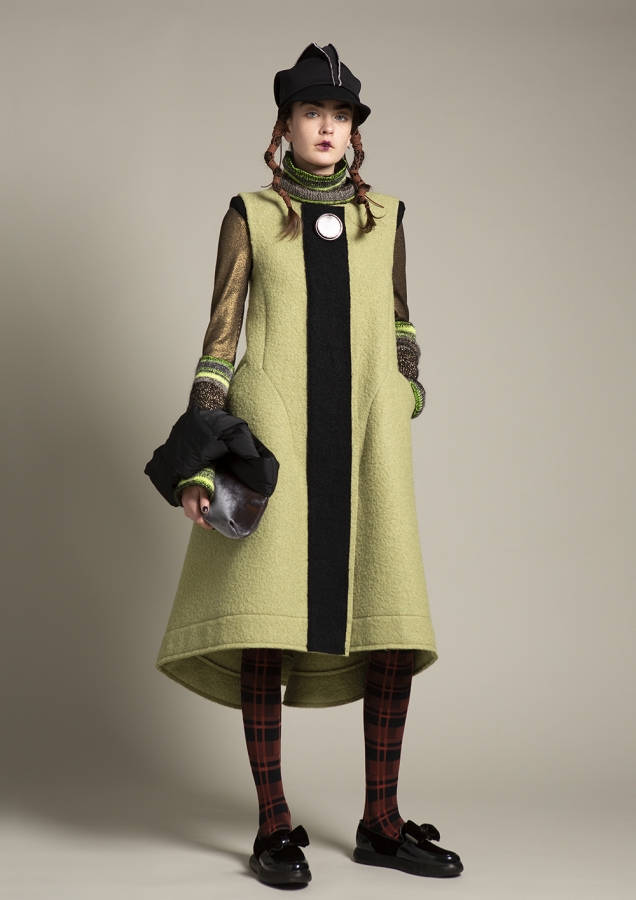
Image Credit Hiroko Koshino | A felted wool gilet dress
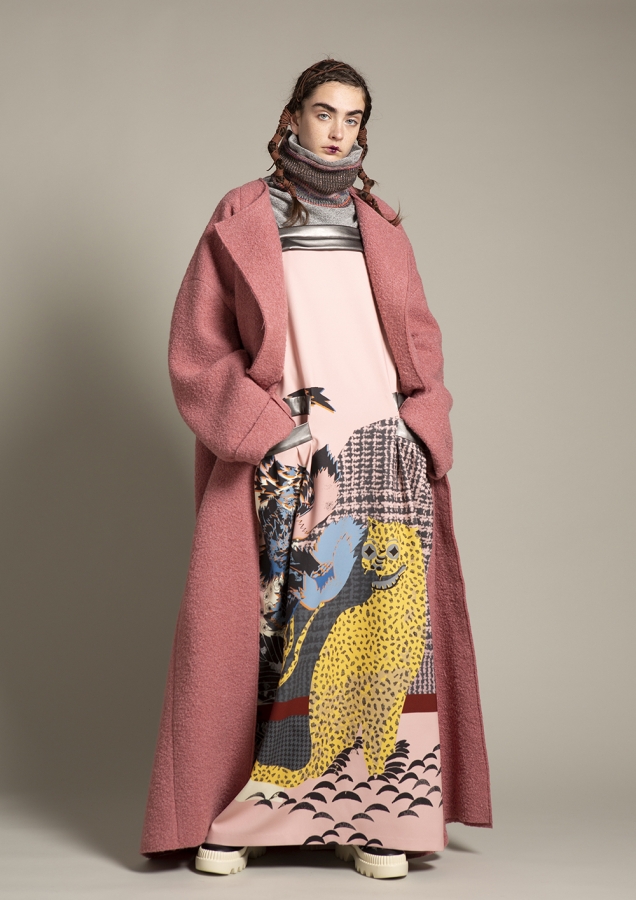
Image Credit Hiroko Koshino | Fun graphics on this mixed-media dress
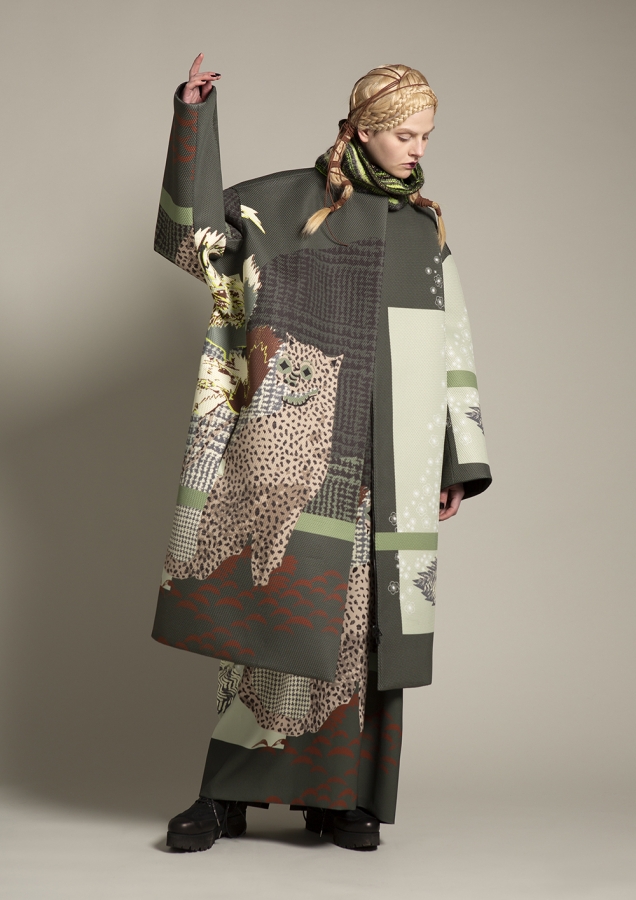
Image Credit Hiroko Koshino | A double graphics ensemble
Designer Wataro Nakazonon of chic and super elegant brand Chono, who won the Tokyo New Designer Fashion Grand Prix in 2018, created a very ladylike and pretty collection around floral dresses, coats and cardigans. Floral prints also came from the stables of Support Surface.
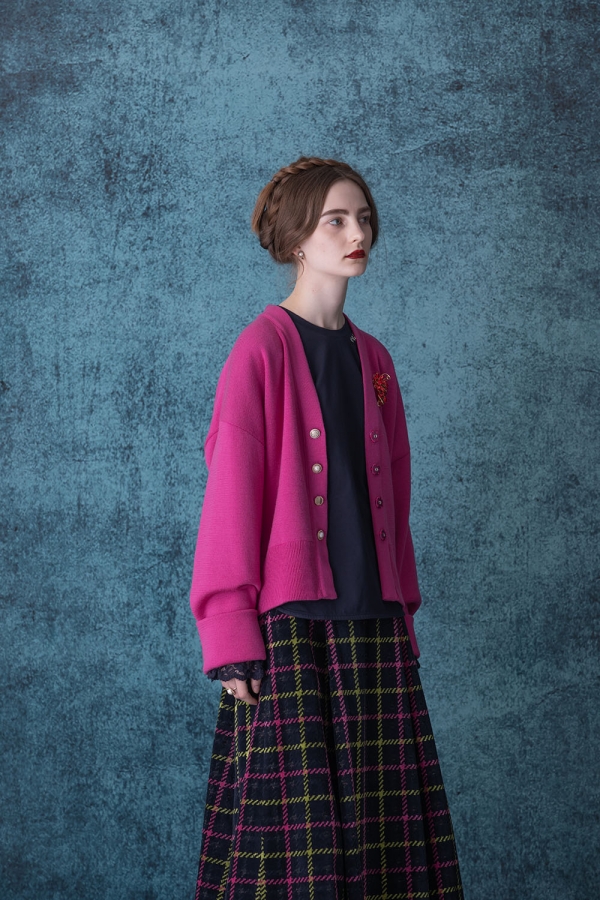
Image Credit Chono | A rather British-looking outfit with plaid wool and a cardigan (where are the pearls?)

Image Credit Chono | A very ladylike little ensemble with a charming denim-lined coat
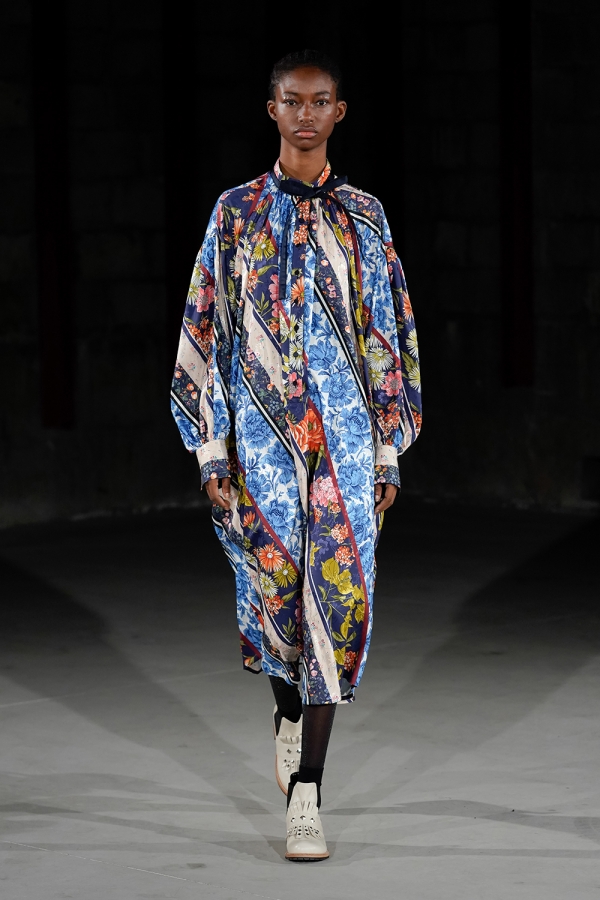
Image Credit Support Surface | Diagonal florals in this tunic dress
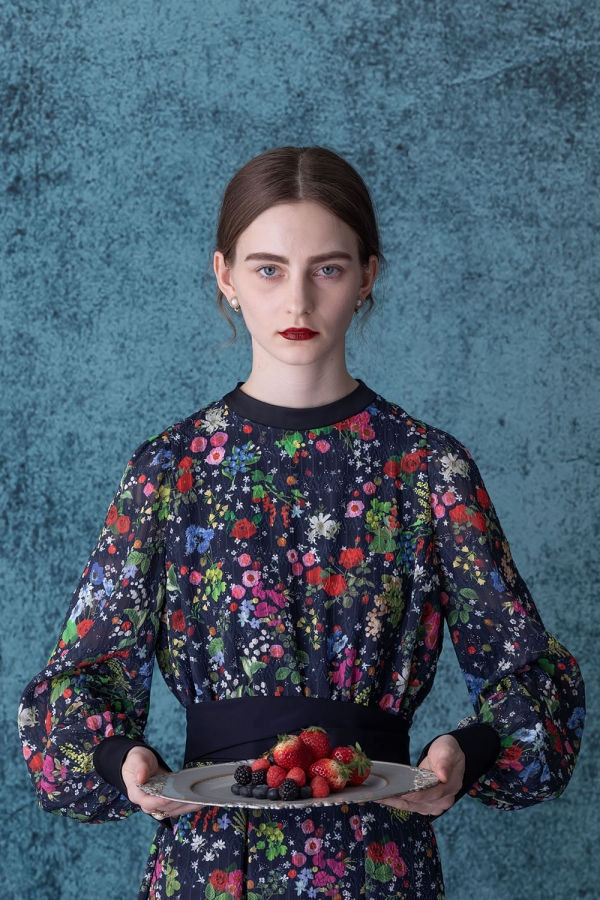
Image credit Chono | A ladylike printed floral dress
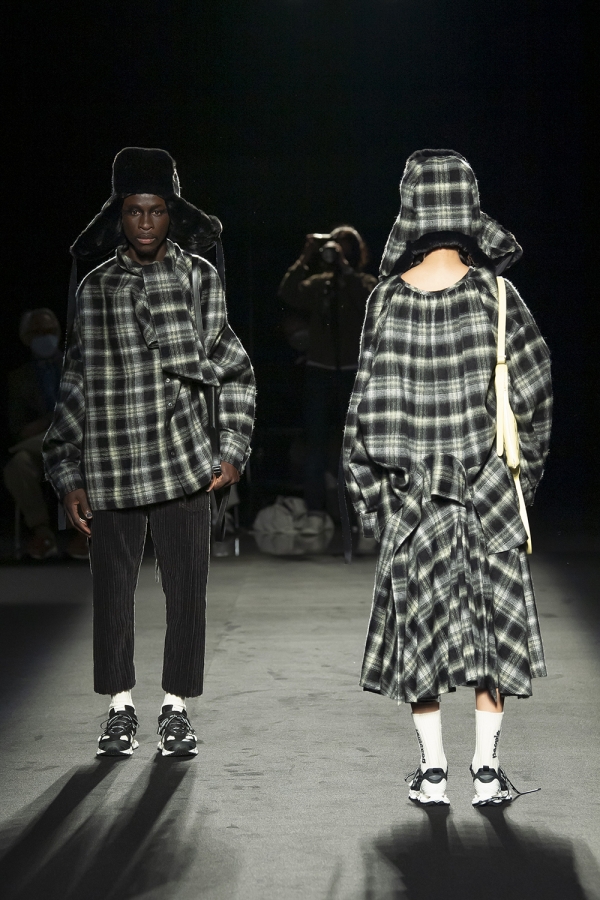
Image Credit Beautiful People | Traditional plaids are given a new look, but stay within a very ‘Japanese’ silhouette
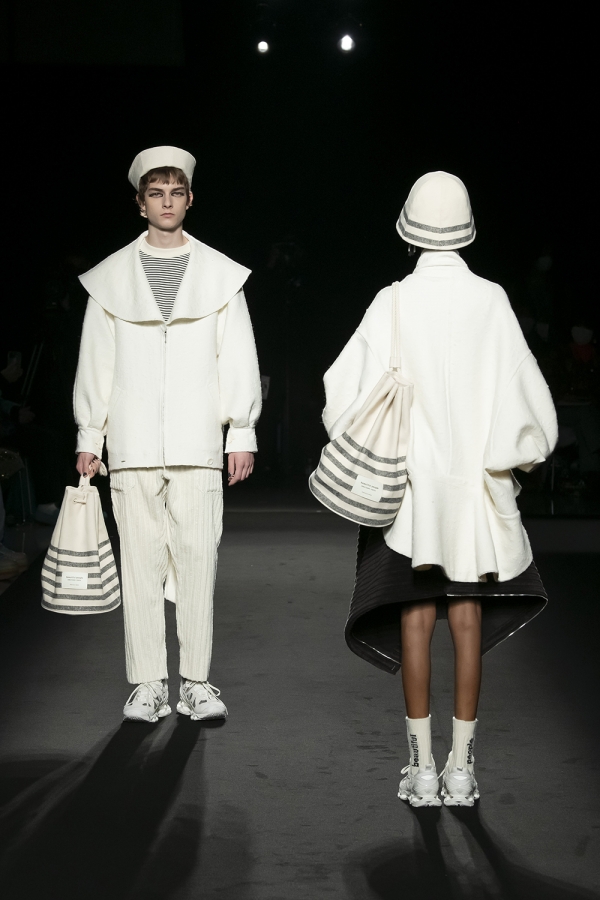
Image Credit Beautiful People | Sailor collars and cloche hats reminiscent of the Twenties
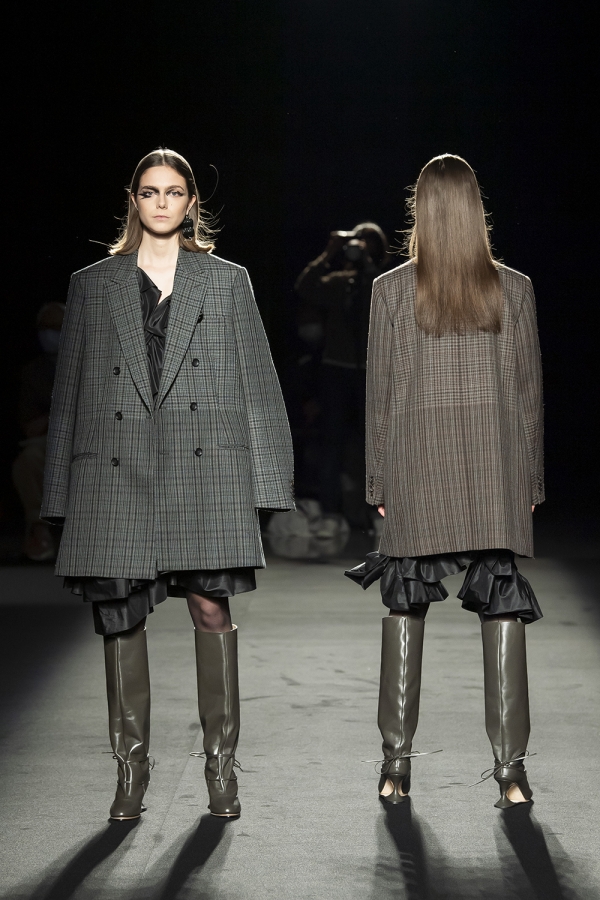
Image Credit Beautiful People | Tweed comes in an oversized jacket
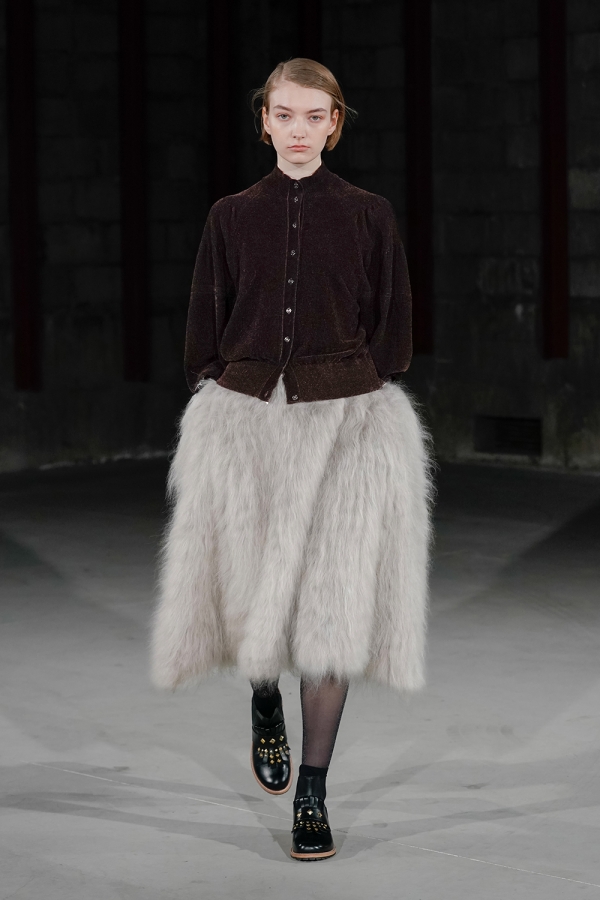
Image Credit Support Surface | A furry skirt and jacket with mandarin collar
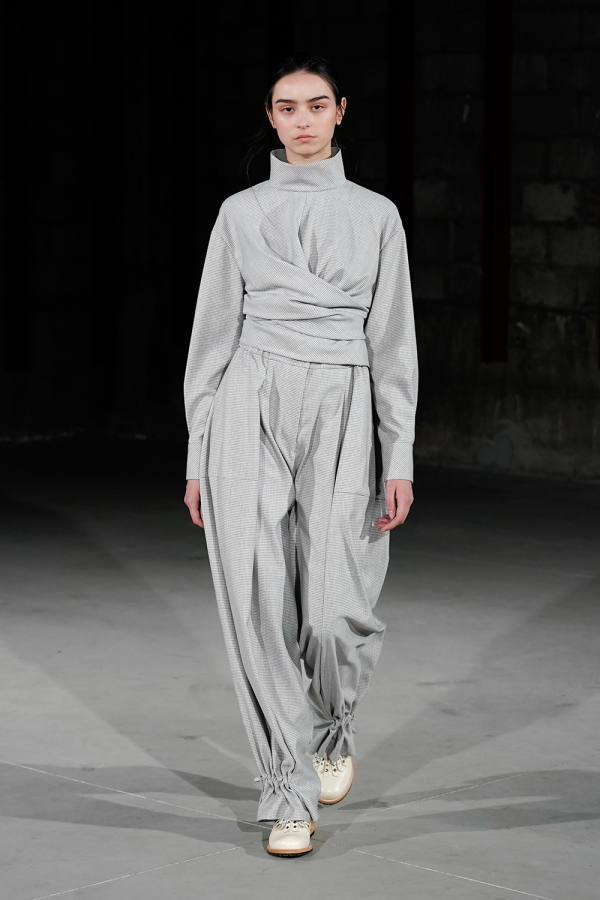
Image Credit Support Surface | Understated elegance with details in the wrap-over detail in the blouse and trouser hems
All-in-all, the first few days of Rakuten produced a diverse, eclectic and quality offering –
I wouldn’t have expected any less from this respected fashion sector. As ever, the world watches Japan to see what we could expect next on our fashion palate.
After all, they have some reputation to uphold!
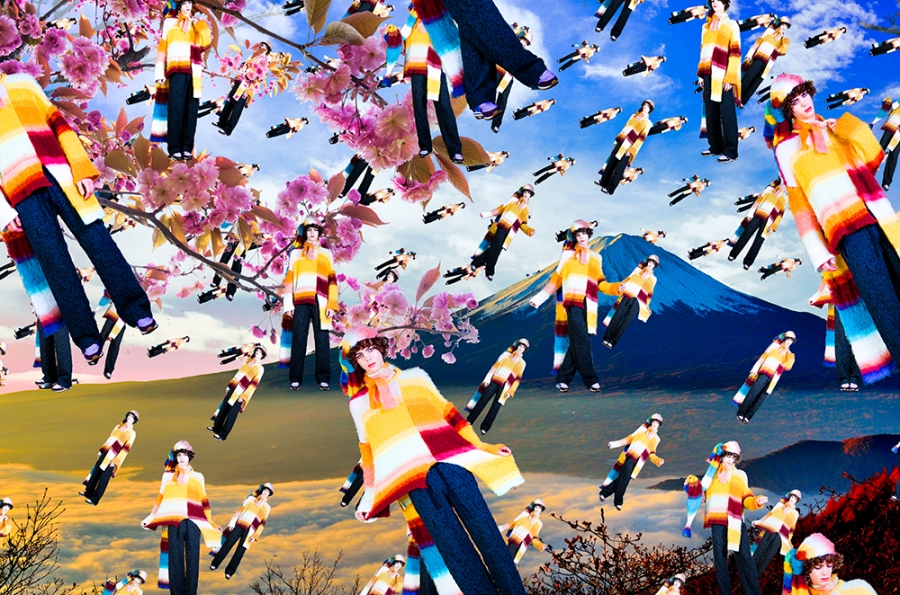
Image credit Ka Wa Key

